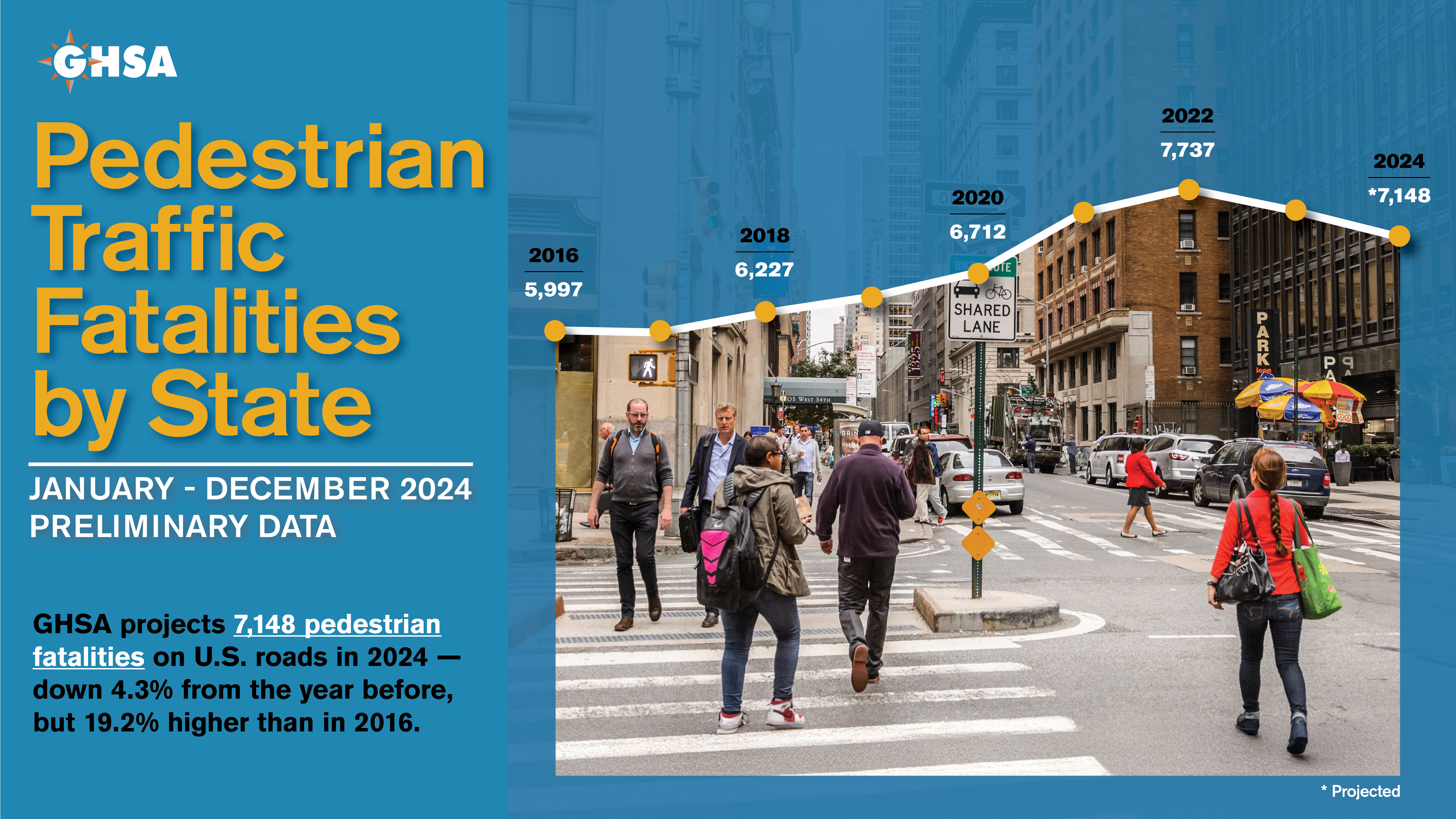U.S. Pedestrian Deaths Fall for Second Straight Year


Drivers struck and killed 7,148 people in the United States last year, enough to fill 31 Boeing 737s, according to a new report from GHSA.


Drivers struck and killed 7,148 people in the United States last year, enough to fill 31 Boeing 737s, according to a new report from GHSA.
FOR IMMEDIATE RELEASE
CONTACT: Adam Snider (GHSA), 202-580-7930, 202-365-8971 (cell)
Despite overall progress, data uncovers alarming trends about deaths in hit-and-run crashes, at night and in places without sidewalks
WASHINGTON, D.C. – Drivers struck and killed 7,148 people in the United States last year, enough to fill 31 Boeing 737s, according to a new report from the Governors Highway Safety Association (GHSA). Pedestrian deaths were down 4.3% in 2024, the second consecutive annual decline after surging throughout the prior decade. Pedestrian fatalities remain nearly 20% above the 2016 level and reached a 40-year high in 2022.
GHSA’s new data analysis, Pedestrian Traffic Fatalities by State: 2024 Preliminary Data, provides a first look at pedestrian safety trends and changes in fatalities at the state level, building upon a report GHSA issued earlier this year that focused on fatalities for January-June. The new report also includes an in-depth analysis of 2023 data from the National Highway Traffic Safety Administration (NHTSA) that reaffirms troubling trends regarding deaths of people on foot happening in hit-and-runs, at night, in crashes with SUVs and pickups, and where there are no sidewalks.
The report highlights how State Highway Safety Offices (SHSOs) and their partners are leveraging enforcement, data, technology, education, infrastructure and other proven solutions to improve pedestrian safety and save lives. GHSA will hold a webinar on July 31, at 2 p.m. EDT, to share an overview of the data and highlight unique approaches states are taking to pedestrian safety.
“The second straight year of fewer pedestrian deaths is a step in the right direction, but much more must be done to protect people walking,” said GHSA Chief Executive Officer Jonathan Adkins. “Now is the time to double down on what works – more and better infrastructure, enforcement to deter dangerous driving behaviors, engaged and informed communities, and vehicles designed to protect people on foot. An all-in strategy to address pedestrian safety will help us build on this recent momentum and save even more lives.”
Pedestrian Safety Trends: What the Data Says
In addition to providing a first look at state-level fatality figures, the GHSA report examines 2023 data from NHTSA’s Fatality Analysis Reporting System (FARS). This deep dive examines when, where and how drivers strike and kill people on foot and found that:
This August, traffic safety, law enforcement, technology, government, nonprofit, and business leaders will come together in Pittsburgh for the GHSA 2025 Annual Meeting. The safety of people walking, rolling and riding will be woven throughout the conference in numerous workshops and general sessions, including several focused on data and the future of traffic safety.
# # #
The Governors Highway Safety Association (GHSA) is a nonprofit association representing the highway safety offices of states, territories, the District of Columbia and Puerto Rico. GHSA provides leadership and representation for the states and territories to improve traffic safety, influence national policy, enhance program management and promote best practices. Its members are appointed by their Governors to administer federal and state highway safety funds and implement state highway safety plans.